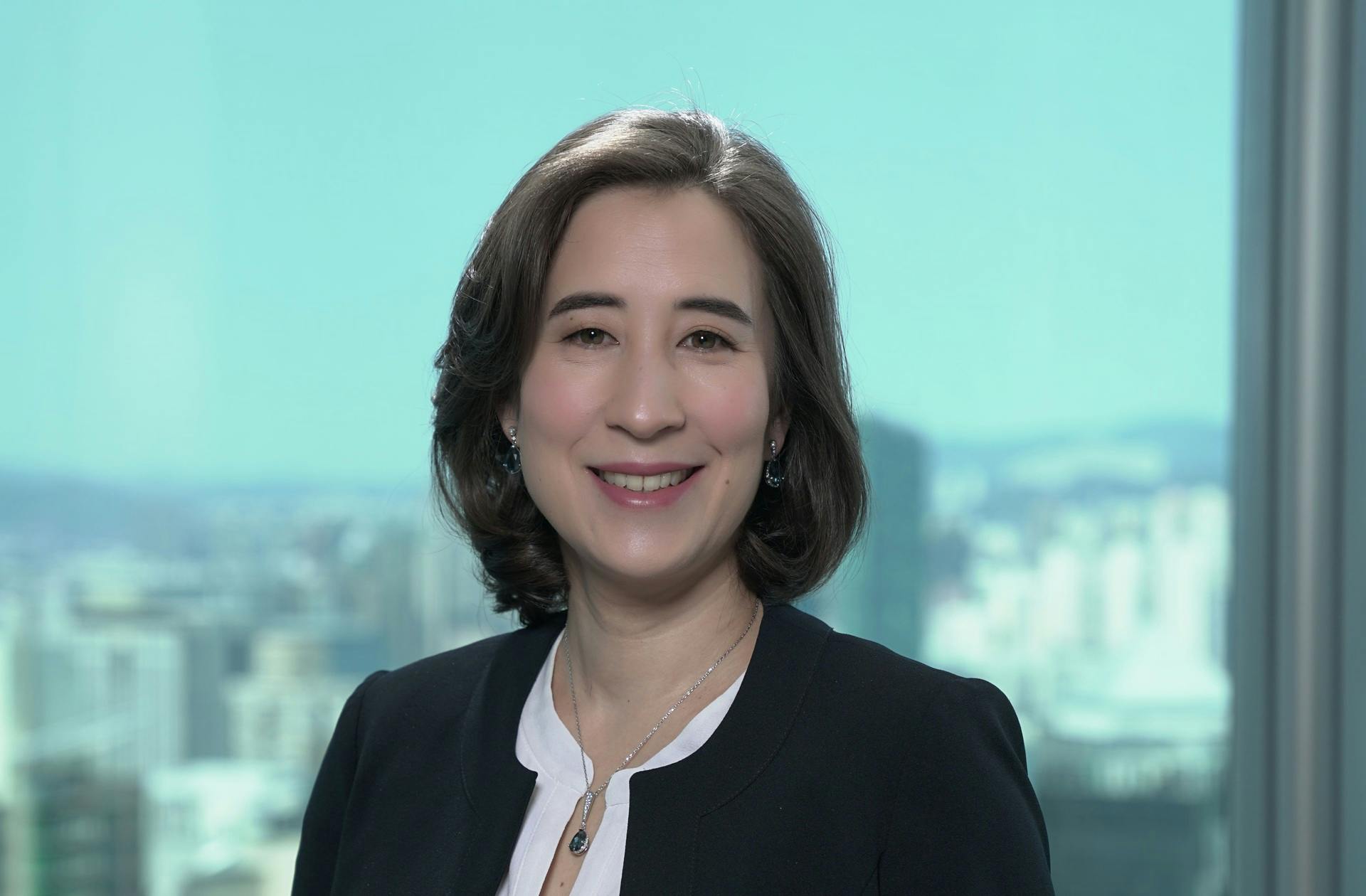
November 9, 2023
Our Risk Management Department plays a key role in the Group's strategy, as we strive to foster a "common risk culture"
4 minutes
Natural disasters, operational risks, cybersecurity, geopolitical risks... Preventing risks and protecting our clients from them are at the heart of our insurance business. So that the future does not constitute a risk, AXA anticipates and analyzes them to offer protection solutions adapted to its customers. Interview with Françoise Gilles, Chief Risk Officer and member of AXA Management Committee.
You took over as head of Group Risk Management at AXA in September 2023. What are the main missions of this department?
From an insurance point of view, risks represent a probability of loss or damage. The first role of the Group Risk Management (GRM) consists in identifying, analyzing and evaluating them. Once this has been done, we develop models designed to anticipate the potential consequences of their materialization. At the same time, the GRM also ensures compliance with current prudential regulations, in particular the European Solvency II directive and its evolutions: this directive requires insurers to have sufficient economic capital to compensate the customers in the event of claims, even for extremely rare events. Ultimately, our objective is to ensure the robustness and sustainability of the Group's performance.
What does this mean in concrete terms? We start by setting a common risk appetite framework across the Group, establishing guidelines and underwriting limits for all entities. We provide an opinion on key business and financial decisions, including the development of forward-looking risk scenarios. This is the steering part of risk management. As such, the GRM plays a key role in the Group's strategy.
We also help to spread a common risk culture
. By sharing its expertise and strengthening coordination and collaboration between the Group’s various entities, the department acts as a catalyst in interactions with our stakeholders: clients, business partners, regulators, shareholders, and the community at large.
What tools does your management have to manage risks?
The GRM relies on a robust internal risk management model designed to ensure the balance between risks, required economic capital and profitability. To manage risks we have several tools.
First and foremost, statistics and modeling, which enable us to determine the probability of occurrence of a risk and its potential consequences, thanks to an analysis of the factors. In this respect, access to abundant, reliable data over many years is a major competitive advantage. Mastering these data and new technologies is key to achieve ever greater precision in our analyses.
To limit risks, prevention is essential. At AXA, we position ourselves as a partner in our customers' development and transformation. Thanks to our global reach, our knowledge of businesses and our understanding of risks, we can support them in implementing genuine strategies to protect themselves from risks. To this end, we encourage the sharing of best practices while obviously respecting the confidentiality of different situations. For example, we have designed an in-house natural disaster modeling tool in order to map and model the impact of such risks occurrence, and better prevent their consequences. We also offer integrated ecosystems, such as the Digital Commercial Platform for commercial property and casualty insurance.
Finally, we analyze the emergence of new risks through an annual survey: the Future Risks Report, of which we have just published the 10th edition. Every year, this survey carried out by AXA, in partnership with the Ipsos polling institute, measures and classifies the perception of emerging risks according to 3,500 experts and 20,000 members of the general public around the world. The results provide a unique and unprecedented overview of emerging risks.
How is the Future Risks Report strategic for AXA and an inspiration to innovate and meet new protection needs?
We undertook this study because a long-term view of risk is essential to inform our strategy and our customers’ strategies. Risks are constantly giving rise to new coverage needs. This is an opportunity for AXA as an insurer, and at the same time a challenge because we have to remain relevant by constantly adapting our offers as the threats become greater.
By seeking to develop new solutions, AXA intends to promote better understanding and forecasting of emerging risks to support society in the long term.
To fight against climate change, for example, AXA took strong measures by increasing its investments in renewable energies tenfold since 2015, while reducing its investments in fossil fuels at a pace that allows the economy to transform. Our technical expertise also helps us invest in technologies to secure the energy transition.
The Future Risks Report also highlights the changing vulnerabilities of our societies. To reach populations excluded from insurance, AXA has created accessible coverage and innovative distribution models. In 2022, AXA had 11 million customers covered by an inclusive protection.
This is the 10th edition of the Future Risks Report. How would you sum up this decade of analysis and research, and its impact on the work of AXA’s teams?
Over the years, this study has evolved from an internal report into an essential reference point for our industry, opinion leaders, the media and all economic players, with a broad base of experts and the general public surveyed in 50 countries.
Firstly, it helps to spread our common risk culture
, and is a useful document in our commercial relations, sharing our long-term vision with our clients and helping them to anticipate future challenges more effectively.
Over the last decade, the Future Risks Report has also become a true compass for AXA teams, testifying to our experts' ability to anticipate. The risk of pandemics and infectious diseases, which first appeared in 2016 in the top 10, materialized in 2020 with the outbreak of Covid-19. Economic and financial fears, which returned to the top of the experts' rankings in 2022, were confirmed by the banking sector crisis in the USA and Europe in early 2023. Finally, climate change, which has topped the experts' rankings since 2015, is now the number 1 risk for experts and the general public in all regions of the globe.
Finally, on a broader level, this publication highlighting the essential role of public/private partnerships in managing future risks, is a valuable tool for raising awareness, initiating discussions with political decision-makers, and collaborating in the management of major risks.
Today, the report invites us to consider new subjects such as cyber risks or AI to continue to be a pioneer on the issues that matter and protect our customers even more effectively.



